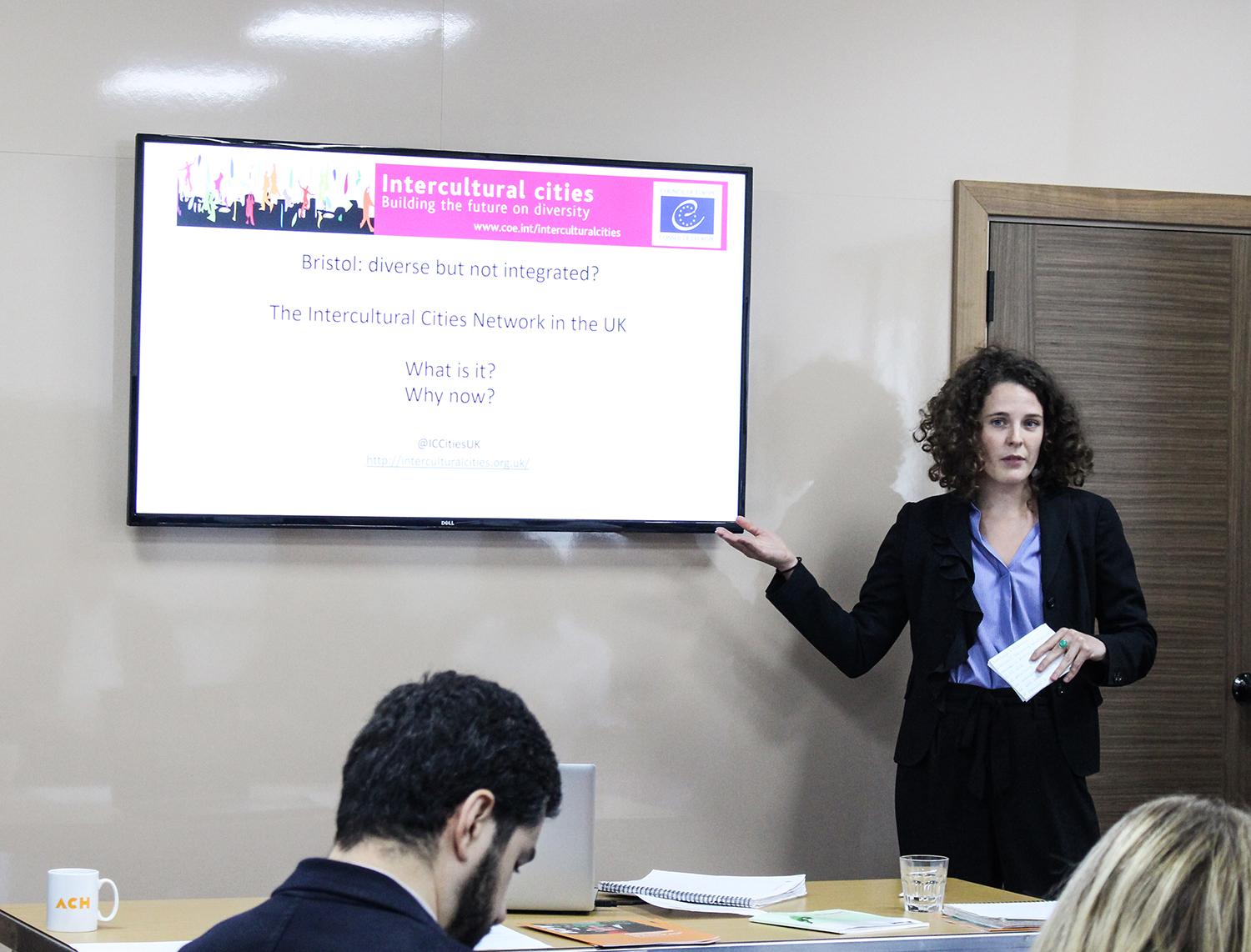
Bristol - diverse but not integrated?
In September 2018, the Inter Cultural Cities UK Desk and ACH / Himilo held a workshop in Bristol for a range of stakeholders to look at the role of culture in relation to the integration of refugees, migrants and the wider community. The ICC perspective is that cities can gain enormously from the entrepreneurship, variety of skills and creativity associated with cultural diversity, provided they adopt policies and practices that facilitate intercultural interaction and inclusion. The Council of Europe has analysed the experience of a range of cities across the continent which are managing diversity as an asset, rather than as a threat. ACH / Himilo through our #rethinkingrefugee paradigm regard refugees and migrants as individuals with rights and responsibilities who should be seen as an asset and not a problem or a case for on-going humanitarian assistance. We work directly with around 2500 people per year offering housing, economic opportunity, training and small business support as well as help in integrating with UK society.
This short note outlines some of the topics that arose from the event.
Context
A key theme of the discussion was the very definition and appropriateness of the term “integration” itself. A national context for this debate is provided by the recent “Integrated Communities Strategy Green Paper”[1] which emphasises the need for well-integrated communities and the many benefits that this brings, outlining that this is not a process of assimilation and is a two-way street where everyone has a role in this. The recent report by Dame Louise Casey[2] points to a worrying number of communities divided along faith, race or socio-economic lines. This is reflected in residential segregation, lack of English language proficiency, and also lack of meaningful social mixing with low levels of contact between people from different backgrounds which raises mistrust and anxiety, damages health and well-being and limits opportunities. Integration is not just about refugees, migrants and other newly arrived communities “fitting in” but involves people from all areas and communities of both place and interest across the city.
The Mayor of London’s strategy for social integration points out that effective social integration goes beyond how people from different backgrounds come into contact with each other. Social integration is the extent to which people positively interact and connect with others who are different from themselves. It is determined by the level of equality between people, the nature of their relationships, and their degree of participation in the communities in which they live.[3]
The local context for this is that Bristol has become a very unequal city and yet increasingly diverse city with high levels of economic growth and prosperity and yet exclusion from this for many including from refugee and migrant communities who tend to be concentrated in relatively small areas of inner-city Bristol (Easton, Lawrence Hill and parts of Ashley and Cabot wards). [4] Opportunities for economic well-being, good health and a decent education reflect these. The number of people not born in the UK living in the city rose from 31000 in 2001 to 63000 or around 15% of the population and the figure is likely to be higher now. Of this group, just under 10 000 people had been in the UK for less than 2 years and 8.5% of people in the city did not use English as their main language. This new influx of new residents does offer Bristol opportunities for new skills and new enterprise and innovation and we need to do more to make sure that these talents are put to work. The Mayor of Lisbon said at an ICC event that cities are about innovation which drive their economies and that innovation, in turn, is driven by diversity. But is integration the most appropriate word or concept or is the concept of inclusion, for example in the context of economic growth, more relevant?
The city’s cultural institutions and activities have a clear role in this context in relation to overcoming divisions within our communities, including in relation to performers and participants, audiences, and employment and economic opportunity. The cultural sector is a major and growing part of the economy of the City and the recent designation of Bristol as a “UNESCO City of Film”, the decision to locate Channel 4's creative hub in the city, as well as the huge redevelopment in the Temple Meads area including a major innovative new campus for the University of Bristol all, underline this importance. The City Council’s Cultural Strategy 2017 makes openness and diversity key elements of its approach to the development of the sector and the “One City Plan” and “Inclusive Growth Strategy” offer a wider framework and yet much of the delivery lies in the hands of a wide range of stakeholders and not simply the City Council. One estimate says that across Bristol and Bath the creative sector employs around 16000 people and growing at 20% per year[5]. So any aim to focus on integration or inclusion that does not focus on this sector is missing out a very significant element of the economy and wider society.
ACH / Himilo work with more than 2500 refugees, migrants and other clients each year and for around 60% of them, economic opportunity is a significant driver for integration, especially through ensuring that individuals do not end up working in entry-level, minimum wage jobs on a long term basis. For this group, access to opportunity through employment or small business development is a priority for integration. In attaining this aim, working directly with employers is a priority and engaging with businesses and organisations across the cultural sector can play a significant role here. So here developing programmes to facilitate access to economic opportunity in the sector via employment and via small business is needed. It will be important to look at both the supply of labour; the awareness and aspiration of refugees and migrants, generic and vocational skills and job search techniques as well as to look at the demand side through which the sector prepares job descriptions, undertakes recruitment, selection and support practices.
However, we also know that some 40% of this group are far from the labour market and some may never end up in work. From our own data and from external studies, such as undertaken in London that problems of isolation from the wider community, loneliness and mental health are a common feature of this group. Here we will develop a new framework to enable a route to integration for those for whom work and economic inclusion will not play this role. Social networks and social capital are key to overcoming isolation and enabling integration and longer-term economic opportunity where appropriate. The role of the cultural sector can also be central to this task too.
Next steps:
A better evidence base; link theory with practice: ACH / Himilo and the University of Bristol’s Migration and Mobilities Bristol Network will organise a series of workshops in early 2019 to build better links between academic research and the work of practitioner organisations. Topics will include; integration, economic opportunity and the role of language in relation to refugees and migrants.
Practical actions: ACH / Himilo, Gapsquare and the Unesco City of Film / Bristol City Council Film Office will organise a workshop for employers across the cultural sector in April 2019 with the aim of elaborating a programme to facilitate access for refugees, migrants and excluded communities.
------------------------------------------------------------------------
[1] Integrated communities Green Paper; Building stronger, more united communities, HM Government, March 2018
[2] The Casey Review: A review into opportunity and integration, MHCLG, December 2016
[3] Mayor of London, All of Us, strategy for social integration, March 2018.
[4] West of England Economic Growth Plan, West of England Local Enterprise Partnership, 2017
[5] http://www.thecreativeindustries.co.uk/uk-creative-overview/facts-and-figures/focus-on-bristol-and-bath


